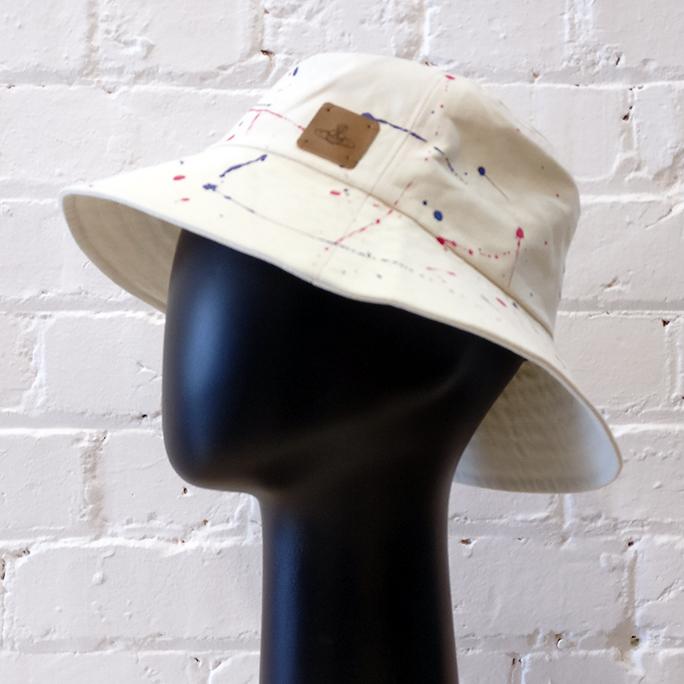The Vivienne Westwood bucket hat has emerged as a quintessential emblem of avant-garde fashion, particularly resonating within Japan’s vibrant style scene. Beyond its utilitarian purpose, this hat transforms into a statement piece, captivating wearers and onlookers alike. Its fusion of historical reverence and contemporary flair invites a deeper exploration of fashion as a cultural artifact. In the realm of fashion, the evolution of accessory design can often reflect collective societal shifts and personal narratives.
Historically, Vivienne Westwood is lauded for her affiliation with punk culture, as well as her ability to artfully juxtapose contrasting aesthetics. The bucket hat, a design traditionally associated with leisure and outdoor activities, is ingeniously recontextualized under her creative vision. The Japanese market, with its rich tapestry of subcultures, provides fertile ground for such artistic innovation. Here, fashion is not merely adornment; it is a medium of self-expression and empowerment.
Upon first glance, one might perceive the design of the Vivienne Westwood bucket hat as deceptively simple, yet this simplicity belies a profound complexity. Crafted with meticulous attention, it boasts intricate detailing that reflects the ethos of Westwood herself. The use of high-quality materials ensures durability, while the distinctive patterns and colors signal originality. Each piece has the potential to act as a canvas, carrying stories and emotions that can resonate with anyone who dares to wear it.
In Japan, the bucket hat transcends its basic functionality, gaining prominence as a symbol of individuality. The bustling streets of Harajuku, known for their eclectic fashion scene, often serve as the backdrop for unique interpretations of this accessory. Here, people of all ages have embraced the hat, integrating it into their daily attire. Whether paired with a casual ensemble or high-fashion streetwear, the Vivienne Westwood bucket hat offers versatility.
One cannot overlook the influence of cultural phenomena on the perception and desirability of the bucket hat in Japan. The country’s fascination with fashion trends from the West, alongside its deep-rooted acknowledgment of heritage, creates a unique juxtaposition. Consumers may find themselves captivated by how Westwood’s designs echo traditional motifs while simultaneously appealing to contemporary sensibilities. It is this remarkable duality that invites curiosity among fashion enthusiasts, encouraging them to explore how the Westwood bucket hat can redefine their personal style.
Moreover, the resurgence of retro fashion has reignited interest in bucket hats, and Vivienne Westwood’s rendition stands out in a crowded market. As nostalgia becomes a driving force in modern sartorial choices, the hat embodies a spirit of rebellion and innovation akin to the punk ethos of the 1970s. This connection to a tumultuous yet transformative period in fashion history adds layers of richness to its appeal, enticing those who yearn for both aesthetic allure and historical significance.
The strategic marketing and collaborations often seen in Japanese fashion culture further enhance the visibility of the bucket hat. By positioning the piece alongside iconic fashion figures or integrating it within bold campaigns, the allure of the Vivienne Westwood bucket hat is amplified. Influencers and celebrities showcasing the hat on social media platforms create a ripple effect, generating intrigue and prompting potential buyers to envision themselves within the narrative that the hat represents.
Additionally, vibrant street markets and high-end boutiques in Japan provide settings where the Vivienne Westwood bucket hat can be appreciated in its entirety. Each shopping experience is curated, allowing consumers to immerse themselves in a tactile exploration of fashion. This approach highlights the hat’s aesthetic value while simultaneously emphasizing its practical functionality. The versatility of the bucket hat as both a fashion accessory and a protective garment makes it exceptionally appealing to a diverse audience.
As the fashion dialogue continues to evolve, so too does the interpretation of the Vivienne Westwood bucket hat. It challenges norms, encouraging wearers to rethink how they define personal style. What was once considered a casual outdoor accessory now emerges as a testament to creativity and resilience. The hat serves as a reminder that fashion is not static; it is a living, breathing entity that adapts and transforms in response to culture and society.
For those who appreciate the symbolism behind fashion, the Vivienne Westwood bucket hat is not merely an item of clothing but a canvas for expression. It acts as an invitation to explore self-identity and individuality. Through its design, it promises a shift in perspective, encouraging wearers to abandon convention and embrace their unique narratives. Whether one chooses to don it in an urban environment or at an intimate gathering, the statement it makes is undeniable—it is a proclamation of personality.
Ultimately, the Vivienne Westwood bucket hat encapsulates the complex interplay of history, identity, and creativity within fashion. Its significance within the Japanese fashion landscape is a testament to the power of accessories as cultural signifiers. More than just a fashionable piece, it invites a reflection on who we are and how we choose to express that in the world, serving as both a fashion staple and an evocative conversation starter. With its rich heritage and modern vitality, the Vivienne Westwood bucket hat stands as a beacon of self-expression, urging fashion enthusiasts to reimagine the potential of the everyday garment.

